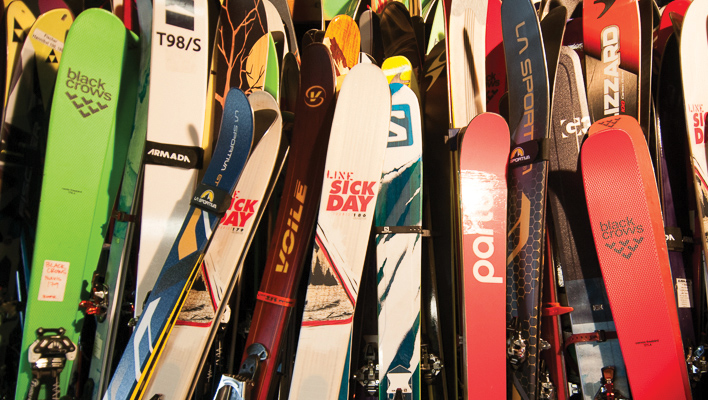“What a ski core is made of determines how damp it is, how lively it is and how long it lasts,” says former Backcountry ski tester Oliver Blackman, who makes custom skis near Smugglers’ Notch, Vt. Traditionally, Blackman says, that core material is wood, and while some manufacturers use foam in their cores, wood offers better longevity and character, depending on the type.

Most lighter skis are made with poplar, a lightweight, durable wood that machines cleanly and provides a softer flex. Paulownia is another lightweight option and is typically harvested sustainably. Harder woods, like ash, beech and maple, offer a stronger, damper feel and are often used as stringers that run as lengthwise strips for added stiffness or underfoot to improve binding retention.
Some ski makers have begun to use bamboo in their cores. “Bamboo is strong, light, eco-friendly and able to return to its original position,” says Tim Dyer of Liberty Skis, which has long incorporated bamboo into their models. The Liberty Envy (see above) incorporates bamboo with poplar and paulownia for weight savings and torsional stiffness.
Common laminates include fiberglass and carbon fiber, the latter offering an exceptional stiffness to weight ratio. Carbon quickly rebounds back to its original shape, but can lack dampness, which sometimes offers a “tinny” feeling. It’s expensive, too, so manufacturers often just use stringers, rather than laminated weaves, to reduce cost.
Liberty Envy
$725 – libertyskis.com
SIZES: 156, 167
DIMENSIONS: 135/105/122
WEIGHT: 7 lbs. 6 oz. (167)











Related posts:
Tech Tip: Scarpa F1 Evo, Evo-lution or devolution?
Tech Tip: kid ready bindings and skis
Tech Tip: Shell Shock
Tech Tip: Five-Point Sidecut, Defined